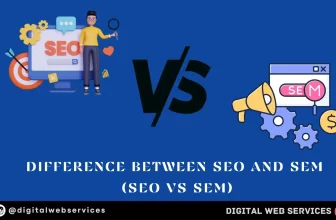
Introduction
APIs are a way to connect different applications and services together, allowing users to access data in a secure and efficient way. They’re also becoming more popular as a means of integrating third-party software with existing systems. However, not every organization has the same set of objectives when it comes to building their APIs. Some might want them built so they can control their data better; others might simply want people to be able to use them easily without any complications arising due to security concerns or other issues related to how they were implemented earlier on in development cycles (or even after). In this article we’ll explore what exactly goes into managing an API lifecycle so that each company can achieve its goals efficiently by following best practices for doing so – without having too much work involved at all!
What is API Lifecycle Management?
API Lifecycle Management is the process of managing the life cycle of an API. It’s a framework for managing the development, release and maintenance of APIs.
The API Lifecycle Management process is also known as the API Management Lifecycle or APIMC.
Why API Lifecycle Management is necessary
API Lifecycle Management is necessary because:
- You need to have a clear and well-defined process in place. Without it, you will have no way of ensuring that your APIs are being built properly or that they’re being maintained properly.
- You need to have a team responsible for managing the process (the same way you would any other system). This can be done manually, but there are many benefits of using automated software tools like APIs Manager Pro or Apigee EdgeSpring. For example:
- You can automate tasks such as creating APIs and validating their data before they’re published on an API marketplace
- Monitoring and analyzing your APIs allows you to identify problems early on so they don’t become more expensive later on down the road when someone tries accessing one of those bad URLs from their mobile device!
What are the stages in the API Lifecycle?
There are three distinct stages to the API lifecycle: planning, building, making accessible (and monitoring and analyzing).
- Planning – The first step in creating an API is deciding what it should do and how it should work. This includes deciding on your technology stack (such as Ruby on Rails or Java), determining whether you’ll use an internal team or external partner(s) to build the product and coming up with a plan for designing it.
- Building – Once you’ve got all that figured out, it’s time to get started! You’ll most likely start by writing some code so that everyone can see what they’re doing while they build your app or service (if applicable).
- Making accessible – Now that there are some working components of your product available online by deploying it to an API marketplace, Github or anywhere else.
Building your API
Before you start building your API, there are a few things to consider. First and foremost is the technical architecture of your API. What kinds of data will be included in it? How will they be structured? And how will they interact with each other? The more specific you can get about these details up front, the easier it will be for everyone involved to follow along as development progresses.
Next comes testing: how do we know that our APIs actually work as expected? And documentation—what do we need to document so that others can use our APIs effectively in future scenarios?
Making your API accessible – what you need to do to ensure that your users can access and use it
- Provide documentation. Your API should have a well-written and easy to understand user guide, or at least a description of what the API offers (e.g. vatcheckapi.com provides extensive documentation for its users). This will help developers get started with your API and make sure they’re using it properly
- Provide sample code. Your developer community needs access to examples of how you want them to use their project after they’ve deployed it on their own website or app. You can also include samples in your documentation if you want them there, but it’s important that users don’t have too much trouble figuring out how something works when they start using it!
- Provide sandbox environments/sandboxes for developers who need help getting started with testing out new features before deploying them live (like staging sites). Sandboxes are like mini-versions of production environments that allow teams working together remotely without having access full versions themselves; this helps prevent bugs from reaching customers when deploying changes early on instead of waiting later down road.”
Monitoring and analyzing your APIs
Monitoring and analyzing your APIs is the first step in API lifecycle management. To monitor your APIs, you can use a variety of tools, but there are a few things to keep in mind:
- Keep track of each API’s performance. This includes latency, throughput and errors. If an error occurs on one of your endpoints or if it takes longer than expected for an endpoint to respond then this could be a sign that something needs attention.
- Look at each endpoint’s response time when it has been called multiple times by different users over time (as opposed to looking at how long it took during just one request). Some endpoints may take longer than others depending on where they’re located geographically; this could affect how quickly users receive their data back from them (and therefore how satisfied they feel about using them).
The future of the API lifecycle management
As you can see, the API lifecycle is a continuous process. This means that it’s not something you do once and then never touch again. It’s something that requires constant monitoring and updates as your business changes over time.
The API lifecycle is not a one-time project; instead, it’s an ongoing process that needs to be updated with new features and enhancements on an ongoing basis. In other words: no matter how long or short your existing APIs are in operation—they’ll still need some level of maintenance from time to time!
A good example of this dynamic nature would be GitHub’s changelog feature for their APIs (https://github.com/developers). This tool allows developers who use these services to see what changes were made over time so they can keep up with those changes themselves rather than relying solely on written documentation provided by companies like GitHub itself.
Every organization will have a different
As we discussed, maintaining an API lifecycle is a critical part of any company’s operations. The process has many moving parts, but it’s possible to keep your APIs updated and secure while also allowing users to access them easily. We hope this guide has been useful as you learn more about how APIs work and where they fit into the rest of your business strategy!
Digital Web Services (DWS) is a leading IT company specializing in Software Development, Web Application Development, Website Designing, and Digital Marketing. Here are providing all kinds of services and solutions for the digital transformation of any business and website.










